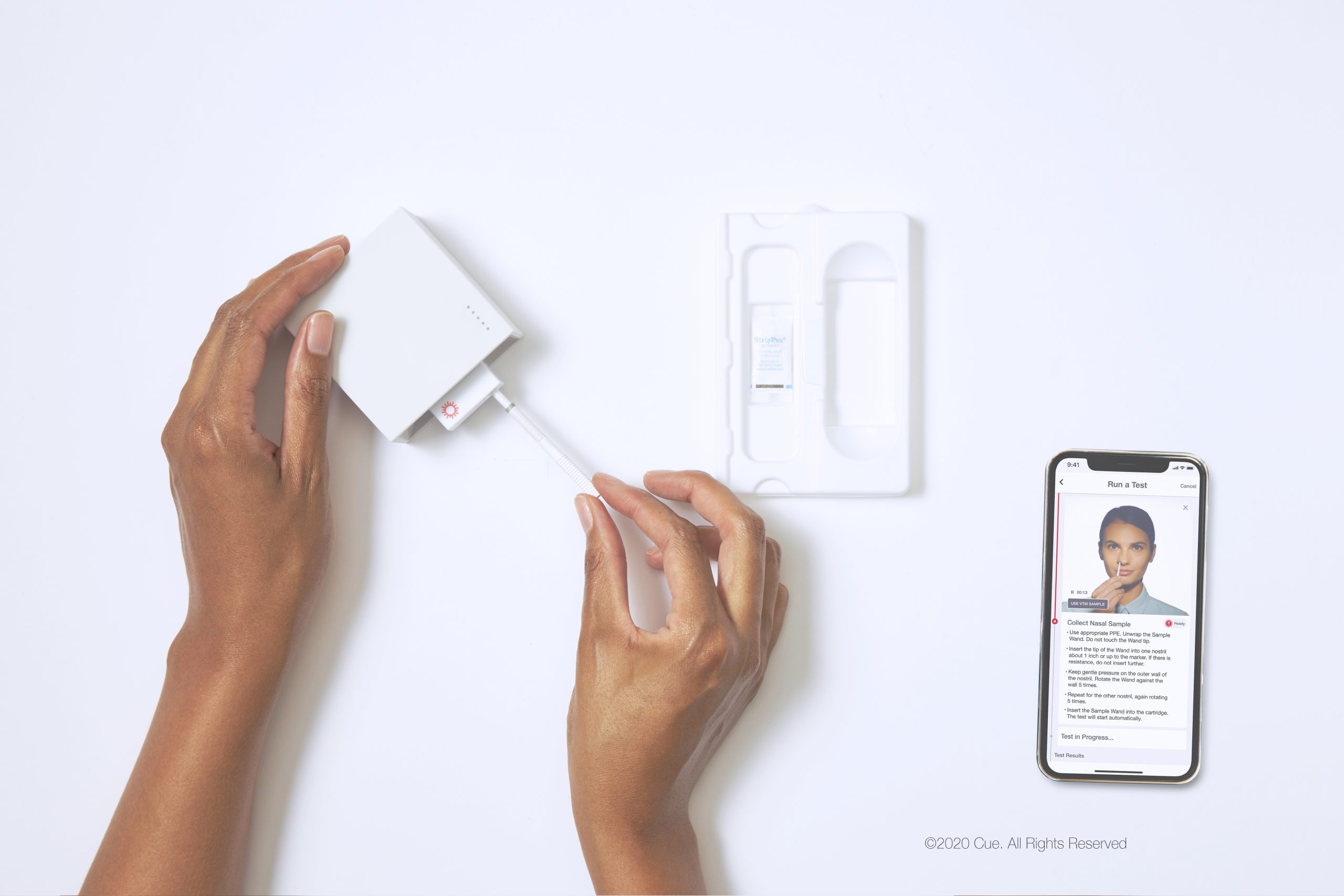Plenty of things have changed in the two years since the start of the COVID-19 pandemic. For example, think about how many people now know the difference between a rapid antigen test and a nucleic acid amplification test. Whether it's for work, travel, or just peace of mind, a lot of us are a lot more familiar with having our nasal cavities poked than we used to be.
In fact, COVID diagnostics even invaded yesterday's Super Bowl with an advertisement for a small LED-equipped white box from a company called Cue Health. The company has developed a fast and accurate at-home diagnostic test, and thanks to a proctored mode, in which your test is supervised by a doctor, its results will be accepted for things like international travel.
For those who don't know their PCRs from their LFTs, here's a quick primer. A rapid antigen test (also sometimes called a lateral flow test) looks for certain proteins from the surface of the virus. These tests are relatively cheap to produce and easy to use. They're the kind that state and federal governments have made available to people for free.
However, while rapid antigen tests are pretty accurate at detecting the presence of viral antigens, they can produce false negatives, so the Centers for Disease Control and Prevention considers a negative antigen test to be a "presumptive" result.
The other kind of COVID-19 test detects some of the actual nucleic acid sequence of the SARS-CoV-2 virus. You've probably heard these referred to as reverse-transcriptase polymerase chain reaction or RT PCR. Instead of simply directly assaying the contents of your nose swab, the first step with RT PCR tests is to transcribe any viral RNA in the sample into DNA (the RT steps) and then amplify that result for detection (the PCR bits).
These tests are generally more sensitive than rapid antigen tests, and they're less likely to return a false negative result. But as any molecular biologist can tell you, they require more focus and concentration to conduct. You also need some specialized equipment and costly reagents, so PCR tests can be quite expensive—between $75 and $300 for a rapid-turnaround test.
In fact, it's more accurate to call this second class of tests nucleic acid amplification tests (or NAATs). That's because there are actually more ways of amplifying the nucleic acids you're looking for than just PCR, and some don't involve heat-cycling the samples the way that PCR does.
Cue Health uses one of these so-called isothermal nucleic acid amplification methods for its test, which was given an emergency use authorization for non-prescription home use by the Food and Drug Administration in March 2021. In time, we should expect to see other molecular diagnostic tests developed for the Cue Health system, but it just runs COVID-19 tests for now.
The test is designed to work at a constant temperature, so instead of a bulky desktop machine that cycles the temperature, the test reader is a small box a couple of inches long and an inch or so high. The actual sample itself is amplified in a smaller (disposable) cartridge that slots into the reader.
After several recent trips that each required an expensive rapid-turnaround test the day before I traveled, I decided to give Cue Health's test a try upon returning from the UK this January. The device is exceptionally easy to use. The reader connects to your smartphone via Bluetooth, and the Cue Health app guides you through the required steps. The process gives you the option to connect to a Telehealth doctor or take a supervised test. Taking a supervised test will generate a test result with the all-important QR code you need to show as proof of your test.
The test takes about 15 minutes to run, and a study found that it has a sensitivity of 97 percent (i.e., very few false negatives) and a specificity of 99 percent (even fewer false-positive results). The primers that Cue Health uses to detect and amplify the viral RNA match 99.2 percent of omicron's sequence. (In December 2021, the FDA warned that some rapid antigen tests "may have reduced sensitivity" in terms of detecting omicron proteins.)
When you consider that a used real-time PCR machine might cost at least a couple thousand dollars, the $249 Cue Health reader starts to look pretty reasonable. That doesn't include the cost of the test cartridges—$195 for a three-pack of tests or $617.50 for 10, or you can buy a bundle of the reader and three tests for $444 or with 10 tests for $845. Even so, the tests are still competitive with commercial same-day testing places, and these tests can be done at home.
There's also a membership option called Cue+ Essential that, for $628.88 a year ($39.99 a month) gives you 10 tests, plus a $100 discount on the reader. (Memberships support everyone in a family, so a household doesn't need more than one.) However, for the proctored test mode, you need to sign up for a Cue+ Complete membership—this gives you 20 tests a year but at a cost of $74.99 a month ($899.88/year). That's expensive enough that it's probably only worth it if you travel frequently, but for those of us who do, it feels like a game changer.


